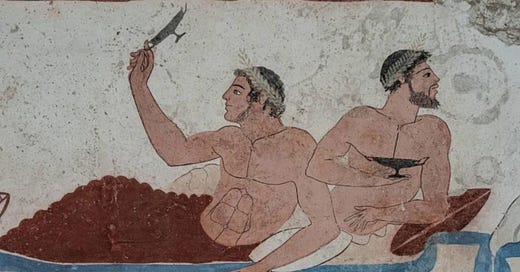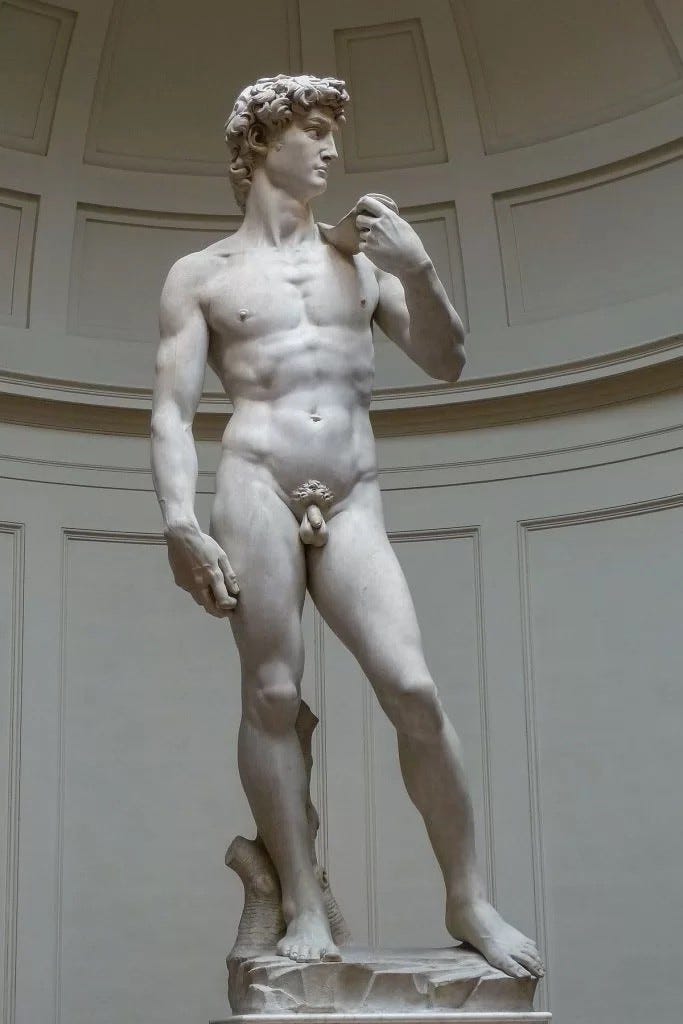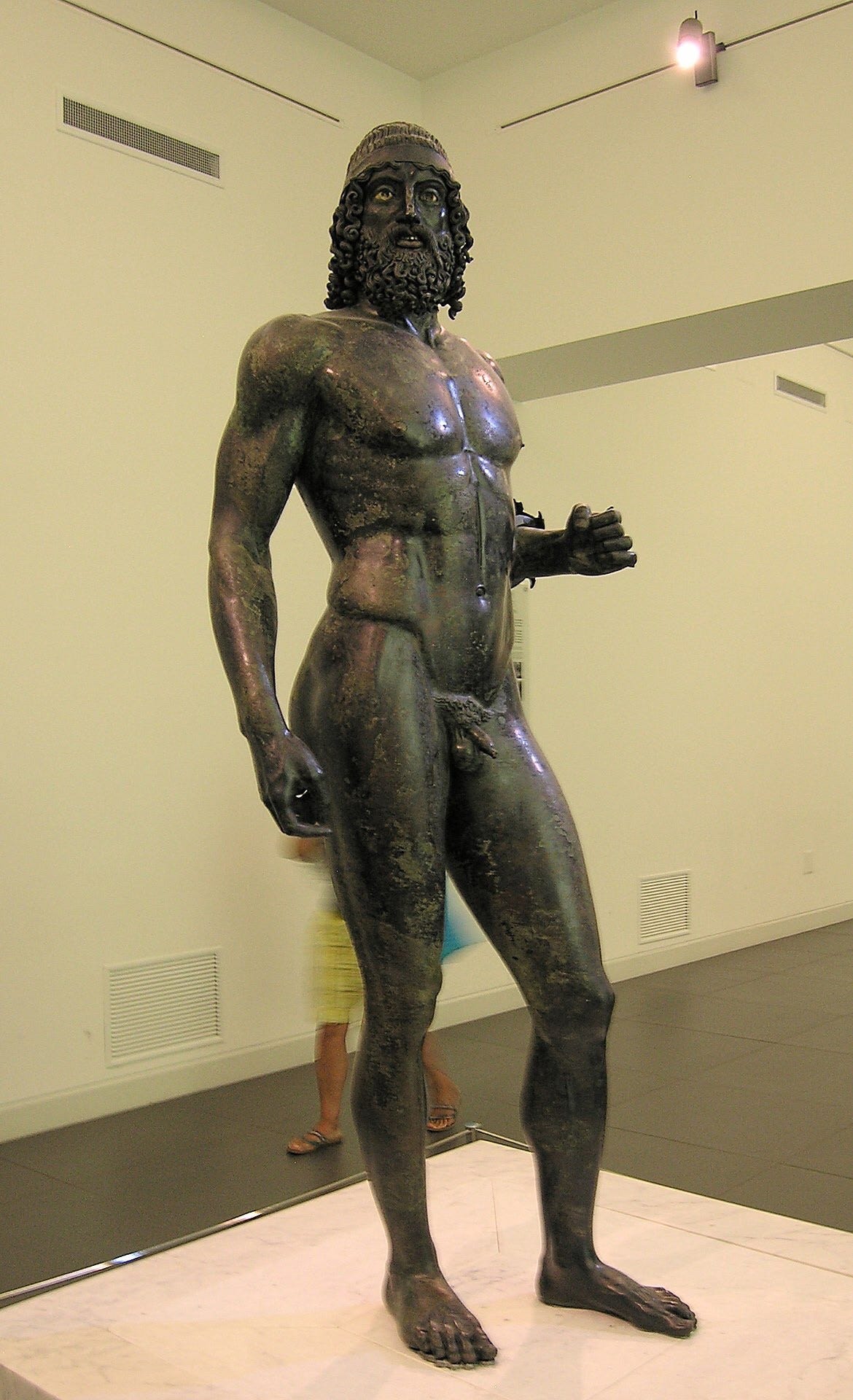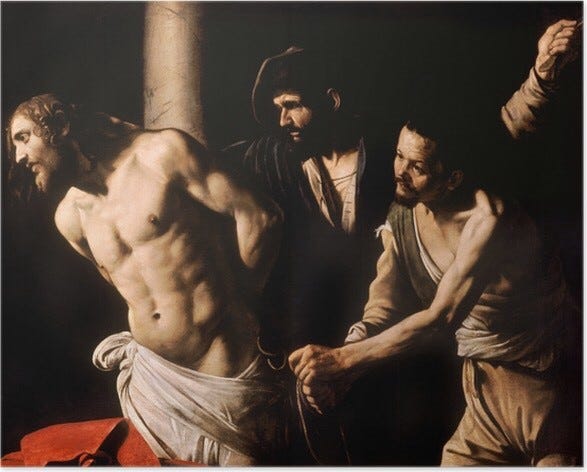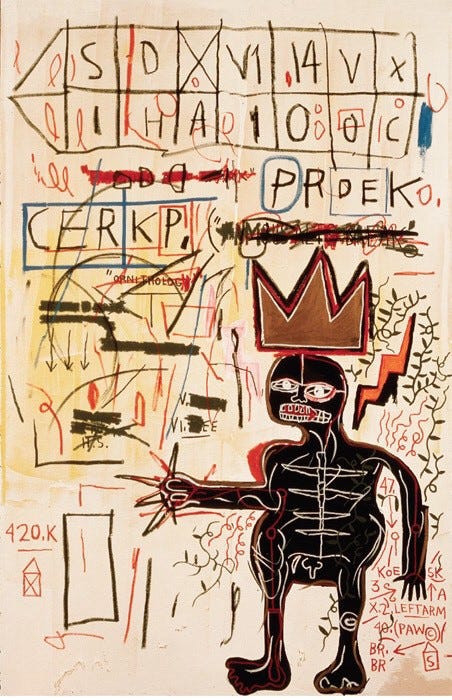With almost 13 million posts tagged #sixpack on Instagram, it seems six-packs abs are the ultimate goal and the grand prize coveted by every fitness freak, gym rat, or wannabe body icon. We thirst for them, we mystify them, we fantasize about them. They seem the ultimate visual reference to control and discipline — and a symbol of male power and virulence since the primitive age.
Though the six-pack is having a Renaissance in the age of social media, chiselled abs have always been a status symbol for men, starting with the Ancient Greeks and Romans. But Europe certainly doesn’t dominate the taut stomach aesthetic. Depictions of six-packs can be found in ancient Indian art, as well as Chinese works and the Japanese today see seem positively obsessed with abdominally ripped young men in their anime.
This ab story starts at the Parthenon, where much of art history started — check out this dude (below). Muscles flexing from holding up the building, his abs are as pronounced as any fitness models are today in Gold’s Gym. He’s not even that young. Mature muscle is what they call this in the bodybuilding world.
Man of Sorrows by Maerten van Heemskerck (above) depicts Christ after the crucifixion attended by angels. Some art historians claim the loincloth is wrapped around an erection symbolizing his resurrection and continuing power. I don’t know about that, but there is definitely something below that swirling gauzy fabric.
Moving onto Lucas Signorelli’s Resurrection of the Flesh (below), from 1502, which depicts a large group of naked men, most of which have six-packs in some form. See the detail from this High Renaissance work, and see for yourself whether these dudes are doing planks galore.
Next, we move on to Benvenuto Cellini’s Perseus with the Head of Medusa (above), from 1545–1554, which is installed in the Loggia dei Lanzi in Florence, Italy. Not only does this dude have incredible sword skills, his toned abs are totally on point, and his V is so pronounced, it’s something that only the gods can attain.
Another of the six-pack’s founding masterworks, David by Michelangelo (below), which has stood in the Uffizi Gallery in Florence since 1504, is the ultimate male body inspo. He’s muscled, but finely — it’s not garish, it’s elegant. His pose tells us he’s confident, and he’s drawn tens of thousands of people a year to look up at his balls — quite a feat — especially in the age of OnlyFans.
Hanuman (below) is a half-monkey, half-man who’s very well known in India to those who follow the Hindu faith as the companion of Rama. Hanuman is often depicted working out, and there are groups of men who worship him, working out for the deity in makeshift religious gym schools around India. His abs are extremely pronounced, as are the abs of his most devoted followers.
The Riace Bronzes (one is below), also called the Riace Warriors, are two full-size Greek bronzes of naked bearded warriors, cast about 460 — 450 BCE that were found in the sea in 1972 near Riace, Calabria, in southern Italy. They obviously did lots of crunches and forearm planks in between battles to get that tell-take center torso vertical line and a notable V-shape, with quite supple obliques.
Caravaggio didn’t miss out on the six-pack abs game, even though he had to paint almost exclusively for the Roman Catholic Church, an organization that pushed the six-pack and firm torsos in general for thousands of years as a way of garnering faithful. His Flagellation of Christ from 1610 highlights Jesus’s firm torso using a technique called chiaroscuro, a painting method that enlists dark moody tones and highlighted areas — in this case, Jesus’s taut abs.
Travelling back to ancient China, here’s a typical 3,000-year-old depiction of merry six-packed demons, dancing and working out their ab muscles even more in the process. You have to have a tight body to haunt people’s dreams and take them to the underworld with ease, the lesson of this painting seems to be.
Moving onto New York in the 1980s, Jean-Michel Basquiat highlighted the six-pack of his primitive figure in With Strings Two (below) in this painting from 1983. Though not as overtly sexualized as many of the works that came before it, that grid of abs is irrefutably on the torso, painted in his crude, playful way.
The obsession with abs continued on in 1980s New York, with Patti Smith’s roomie Robert Maplethorpe not only having a six-pack himself but photographing rippling abdominals many times, including in his 1986 photograph, Bellybutton (below), which provides just a hint of the target area.
Cut to Japan in the 2020s, where literally millions of pages of anime are produced each year. The six-pack here is an obsession barely rivalled on earth. Almost every anime dude has them — in fact, they seem almost a prerequisite for being masculine in these fantastical realms. Look at Alexander (bel0w), still sweating from his abdominal regimen, his abs saying “hey look at me” just above his Speedo.
And finally, though not well known, and likely never to be exhibited, do a quick image search for “ab art” and you’ll encounter myriad drawings, paintings, and other art forms like this ab charcoal drawing (below) by Pragubsk. It seems that our fascination with the abdominal muscles may continue on into the digital realm, and well past it.
You can now read The Drifter in the new Substack app for iPhone.
With the app, you’ll have a dedicated Inbox for my Substack and any others you subscribe to. New posts will never get lost in your email filters, or stuck in spam. Longer posts will never cut-off by your email app. Comments and rich media will all work seamlessly. Overall, it’s a big upgrade to the reading experience.
The Substack app is currently available for iOS. If you don’t have an Apple device, you can join the Android waitlist here.

